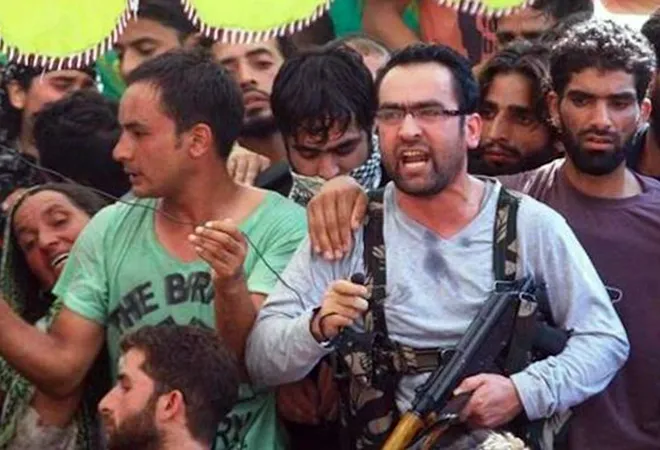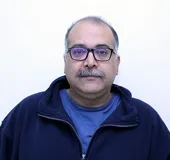The Indian security forces operating in the Union Territory of Jammu and Kashmir dealt a major blow to the Pakistan-based Islamist terror group Hizbul Mujahideen (HM) by eliminating its operational commander Riyaz Naikoo in an intelligence-based operation (IBO) on 6 May in his native village Beighpora in South Kashmir. Naikoo was a high value target who was responsible for many cold-blooded killings of off-duty policemen and alleged police informers, and was very active in trying to rebuild the HM’s terrorist network in J&K by recruiting young men using the social media and other online forums. He had successfully eluded the security forces for many years but finally his luck ran out.
The elimination of Naikoo is certainly a shot in the arm for the anti-terror operations in the Kashmir Valley. It would, however, be a mistake to imagine that this decapitation of HM would break the back of terrorism in Kashmir. While decapitation of terror outfits is a very important part of the strategy to crush terrorism, it is at best a necessary condition to end terrorism, not a sufficient condition to achieve that objective. The reason is simple. There is enough jihadist cannon-fodder in Pakistan and Kashmir to keep the flames of jihadist terror alive in Kashmir for the foreseeable future. Even though it is a big setback and can create some disarray in the organisation and also have an impact on morale, a slain terrorist commander is eminently replaceable. Therefore, while Naikoo’s ignominious end doesn’t mean the end of terrorism in the Valley, there are some important takeaways from the killing.
The first is that most terrorists in J&K have a fairly short shelf-life. Some have been eliminated within a day or two of their taking to arms. Other have lasted a few weeks, some a few months and in rare cases a couple of years. In fact, the entire Burhan Wani gang was eliminated within a couple of years of the infamous photograph that made the gang members poster boys of the new terrorism that was unleashed in Kashmir. Naikoo was somewhat exceptional in the sense that he survived longer than most other terrorists – around eight years after he made terrorism his full-time vocation. What is important is that the intelligence network of the security forces is robust and information about the terrorists is flowing thick and fast. This is borne out by the spate of encounters that have taken place in last few weeks. Just in the month of April, 28 terrorists were killed in IBOs and in the first four months of the current year 78 terrorists have been eliminated. This then is the second big takeaway. People in Kashmir might pretend out of fear that they support the terrorists and their pernicious agenda, but behind the scenes they are feeding information about the terrorists to the security forces. This is partly because many people abhor the violence that the terrorists perpetrate and partly because of the extortion and ruthless barbarism perpetrated by the jihadists.
The third takeaway is that it is not only dangerous but also despicable to romanticise terrorists while they are alive and normalise, even humanise, then when they are despatched to meet their maker. What is worse is to find excuses and come up with disingenuous explanations about why someone turned into a cold-blooded killer, and in doing so ignore what stares everyone in the face: it is the ideology, stupid! Let us be clear. A Riyaz Naikoo was no math genius. He wasn’t a contender for a Fields medal. He was at best a mediocre fellow who got a degree in math and could only get a job as a school teacher. To make it sound as if he was some kind of an Albert Einstein who became a terrorist because of India is utterly preposterous.
Scoring above 90% in class X or XII might earn someone the nickname of Einstein but it doesn’t mean the kid was anywhere close to becoming an Einstein. In other words, Naikoo, like others of his ilk, took to jihadist terror because it attracted them, gave them a sense of mission, purpose and was a higher calling, and not because someone was at some time slapped around by a policeman. The constant search by the apologists for terrorism for that single life changing moment – this normally only happens in movies, because real life is a little more complicated – is at best virtue-signalling and at worst, an attempt to defend a dreaded terrorist by making him appear wronged, or even a victim rather than a perpetrator of unspeakable crimes.
But given the triple entente between the leftists, liberals and jihadists, it is now the new normal for the Washington Post to describe the slain ISIS chief as “an austere religious scholar”, for Reuters to headline the story of Naikoo’s killing as “Indian troops kill math teacher turned rebel” and for the Islamofascist Erdogan’s state controlled media TRT World to write a glowing obituary of Naikoo. Even within India, liberal twitter handles have been deafeningly quiet, almost as if they are in mourning over Naikoo’s death. This is part of the larger ecosystem that sustains, sponsors, supports and romanticises terrorism and silently seduces young men to take to terrorism. Unless this ecosystem is demolished the war against terrorism will always end up mowing the grass instead of uprooting it.
This commentary originally appeared in Mail Today.
The views expressed above belong to the author(s). ORF research and analyses now available on Telegram! Click here to access our curated content — blogs, longforms and interviews.




 PREV
PREV


